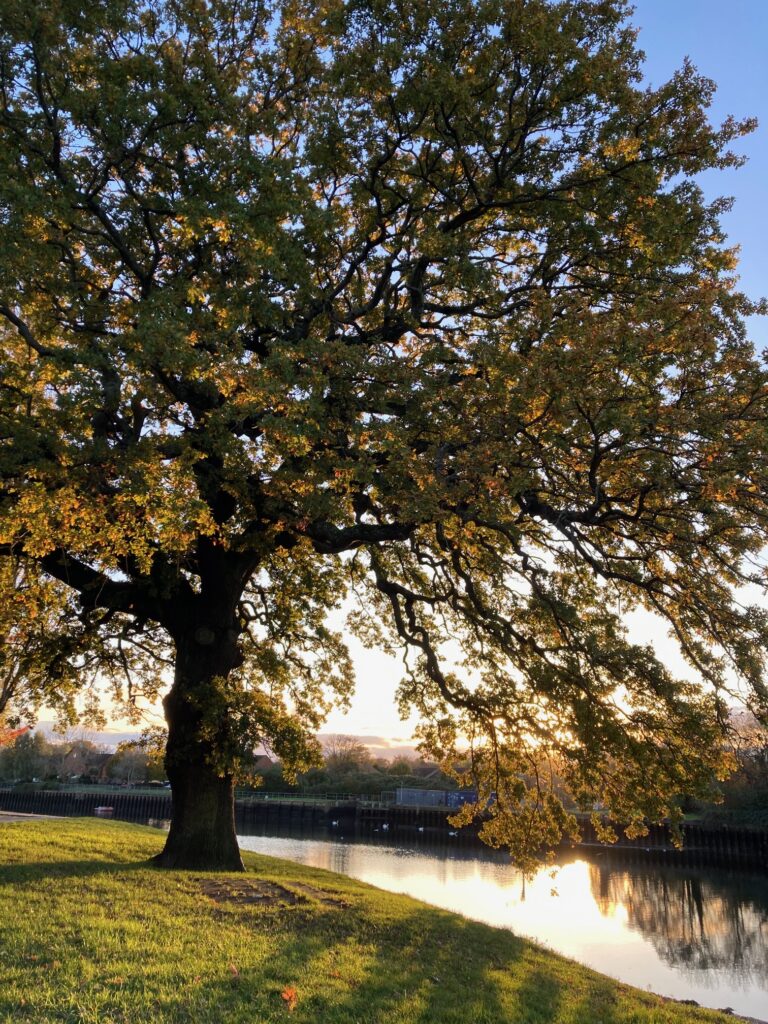What3words Reference: handed.drove.moves
Location; A beautiful single tree beside the river on the bend after River View Road
A large deciduous tree up to 20-40 metres tall with a broad crown and sturdy branches.
The leaves are on average 10cm long with 4 or 5 deep wavy lobes having almost no stalks, growing in bunches. Contrast the red oak leaves which tend to have fewer lobes, each toothed and pointed while the Turkey oak leaves can be long, elaborate and multi-lobed and pointed or simple and rounded.
The flowers are long limey yellow catkins, whereas the red oak flower catkins are more compact and more bronzey coloured. Turkey oak catkins are also long but not so lime yellow.
Acorns are the fruit of the oak tree on long stalks held in cups called cupules. As the grren acorns ripen they turn brown and loosen from the cupule and fall to the ground, sprouting the following spring. The red oak acorns are similar, taking 2 years to ripen. However the Turkey oak acorns have distnctive shaggy cupules almost looking like moss. An oak tree living many, many centuries has the potential to produce 10 million acorns. A 700 year old oak is old but could live over 1000 years.
Oak trees host a great variety of insects, which in turn nourish many birds. The flower and leaf buds support purple hairstreak butterflies. Holes and crevices in the bark can provide nesting places for pied flycatchers, redstarts or marsh tits. Bats may also roost uner loose bark feeding on the canopy richin insects. In oak woods the rich leaf mould support stag beetles.
Druids practised rituals in oak groves, and the oak was sacred to both Roman and Celtic gods. Ancient kings and Roman Emperors wore crowns of oak leaves and couples were wed under ancient oaks in Oliver Cromwell’s time. Sadly because they are often the tallest trees in the lanscape they can attract lightening strikes.


